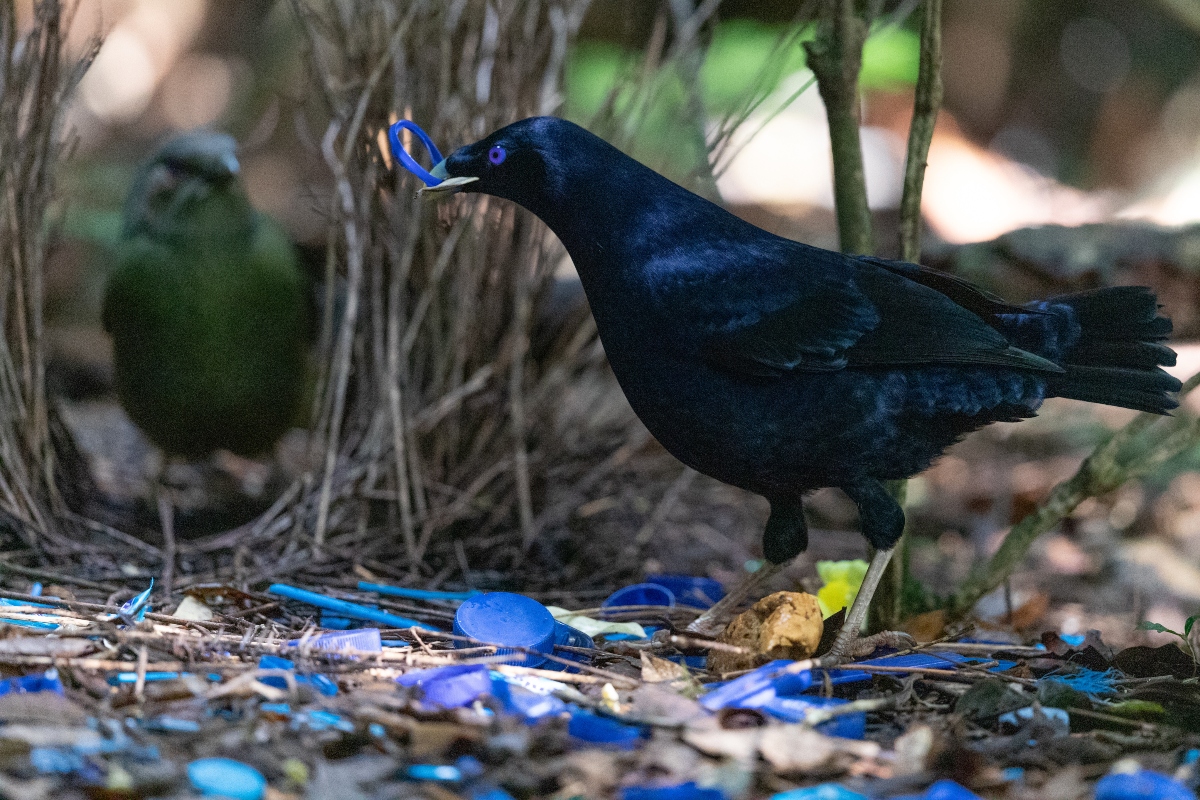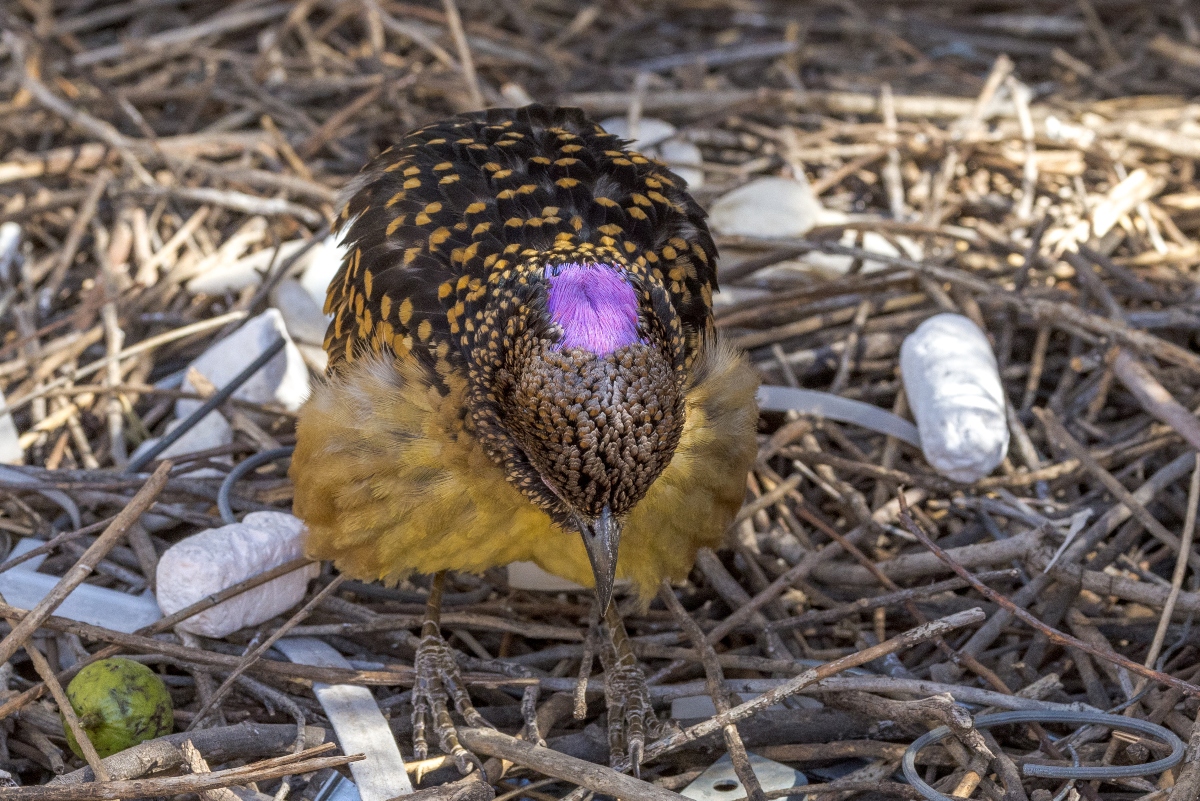Diving deep into the tropical and subtropical forests of Australia and Papua New Guinea, one can witness an extraordinary spectacle — the intricately constructed bowers of the Bowerbirds. Beyond their architectural prowess, these birds are celebrated for their ritualistic courtship displays, making them one of the most intriguing avian species on the planet.

Bowerbirds, which belong to the family Ptilonorhynchidae, are medium-sized birds varying in coLoration among species. However, what truly sets them apart is not their own appearance, but the elaborate structures, or “bowers,” they create. Contrary to common misconception, these bowers aren’t nests but stages for their elaborate mating dances.
A male Bowerbird’s masterpiece is built using twigs, leaves, and grass. But the construction is just the beginning. Once the basic structure, which varies among species from avenue-type to maypole-type bowers, is complete, the bird decorates it meticulously. Employing an artist’s precision, he adorns his creation with vibrant objects he finds, such as feathers, berries, shells, and even human-made items like bottle caps or pieces of glass.
The intention behind this painstaking effort is courtship. When a female approaches to inspect a bower, the male embarks on a riveting dance, singing and showing off his vibrant plumage, hoping to impress her. The bower acts as a backdrop to this performance, with the decorations playing a pivotal role in attracting the female’s attention.
The female Bowerbird, for her part, is an exacting critic. She inspects multiple bowers, evaluating the quality of each male’s display, architecture, and artistry before choosing a mate.
Beyond their architectural endeavors, Bowerbirds are known for their vocal versatility. Many species can mimic the calls of other birds and even mechanical sounds, adding another layer to their captivating courtship displays.

Interestingly, the Bowerbird’s penchant for collecting has provided scientists with insights into changing environments. By noting shifts in the items they gather, researchers can gain an understanding of the anthropogenic influences on their habitats.
However, like many forest dwellers, Bowerbirds face threats. Habitat loss due to deforestation and climate change impacts their survival, emphasizing the need for conservation efforts in their native regions.
In cultural contexts, the Bowerbird has become symbolic of creativity, persistence, and the lengths one might go to for love. Their extraordinary courtship behaviors inspire artists, poets, and anyone who witnesses their displays.
In essence, the Bowerbird, with its unique blend of architecture and artistry, is a testament to nature’s boundless wonders. In their quest for love, they create structures that are both functional and beautiful, reminding us of the intricate dance between survival and self-expression in the wild.